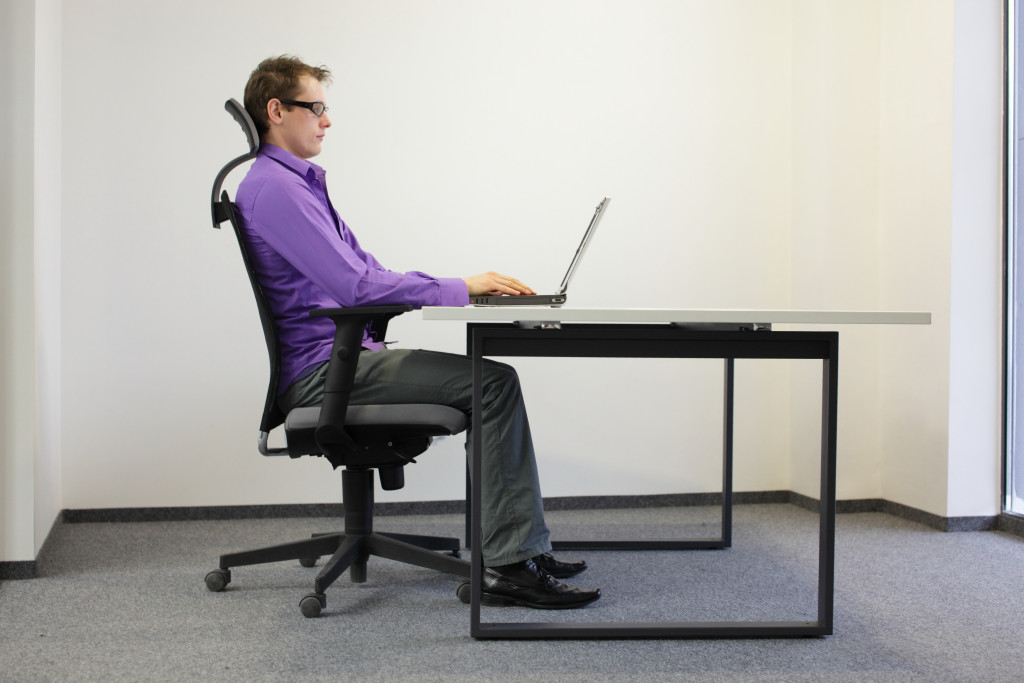- Vitamin D deficiency is a health risk associated with remote work, which can be addressed by spending time outdoors.
- Stress, fatigue, and posture issues related to working from home can lead to reduced productivity, back pain, and headaches.
- Preventing feelings of loneliness or isolation is key to maintaining healthy mental well-being.
- Employers need to provide employees with access to resources that can help them manage these risks.
The rise of remote work has brought a host of new health risks that many people are unaware of. Working from home can lead to physical and mental fatigue, increased stress levels, and decreased productivity if not managed properly. Fortunately, there are several steps you can take to mitigate these problems and stay healthy while working remotely. By following these tips, you can ensure that your experience with remote work is both productive and healthy!
Vitamin D Deficiency
The health risks from working from home are a growing concern; one is getting vitamin D deficiency. This is caused when most of the time is spent indoors because vitamin D is created in the body by exposure to sunlight. Without enough sunlight, a person will develop an insufficiency of this essential vitamin, which can cause fatigue and depression, and weakened bones.
To prevent vitamin D deficiency, people working at home should try to gain natural sunshine through outdoor activities or sitting outside. They should also consider investing in quality pitched roof lights to bring more daylight into their home office environment. Finally, if someone believes they already have a vitamin D deficiency, it can be addressed with supplements or dietary changes; however, these components should always be discussed with a medical specialist for evaluation first.
Stress and Posture Issues
Here are some of the stress and posture issues that most remote workers face:
Fatigue

Working from home can lead to fatigue and burnout if not managed properly. The risk of experiencing fatigue is increased when workers do not maintain consistent working hours, find it difficult to set boundaries between work and personal life, or experience social isolation. Fatigue and burnout are characterized by low energy levels, lack of motivation, difficulty concentrating, and negative thoughts.
To reduce the risk of fatigue when working from home, individuals should work in dedicated areas that are free from distractions, maintain regular daily schedules with built-in breaks for physical activities, connect with colleagues regularly over video conferencing or phone calls, take vacation days as needed, and ensure adequate sleep hygiene.
Stress
Stress is a common health risk associated with remote work. It may manifest in difficulty concentrating, lack of sleep, or even highly elevated levels of anxiety. To ease this stress and mitigate any associated health risks, individuals should establish proper work-life boundaries and prioritize self-care. At the same time, they hold responsibilities at home as well. Setting regular breaks, adhering to consistent sleep schedules, and maintaining a healthy diet can ensure productivity without draining an individual’s mental energy store too quickly.
Furthermore, engaging in activities that bring joy should be incorporated into their daily routine, such as exercising or reading; fostering relationships (both platonic and familial) is also an effective way to alleviate tension. Lastly, consulting a therapist and/or reaching out to colleagues when struggling are practical solutions for alleviating job-related stress, especially since many people now feel isolated working from home – which adds strain on individuals’ mental health.
Reduced Productivity
Working from home can also lead to an increased risk of reduced productivity. It is too easy for distractions to set in and for our focus and concentration levels to lower, leading us to cut back on our usual workloads. To prevent this reduction in productivity, one should even out their day with regular breaks and designate specific times for focused work sessions.
This allows the individual time to refresh their mind and refocus their efforts throughout the workday to maintain a good level of productivity. Additionally, recognizing when one’s motivation has declined is important in dealing with reduced productivity. This helps identify moments where one needs either longer breaks or assistance from others to get back on track.
Poor Posture and Ergonomics

Poor posture and ergonomics are a growing health risk for many working from home. This occurs due to workers not following the same postural habits, such as chair position, monitor placement, and workspace layout, that office environments typically provide. Working from home can lead to poor posture over an extended period which can cause back pain, muscular fatigue, and headaches.
Proper ergonomic practices should be used while working at home to prevent this. This includes proper equipment setup with adjustable chairs that provide proper lumbar support and keyboard tray positions, as well as having users pay attention to how they hold their bodies during long periods of work.
Loneliness/Isolation from Colleagues
One of the biggest problems is loneliness or isolation from colleagues. This phenomenon is reported with increasing frequency as more and more people shift their work to remote settings. Such loneliness and isolation often lead to feelings of depression, lack of motivation, exhaustion, and poor performance.
The best way to prevent this problem is by using technology for frequent and meaningful employee connections. Staying organized can also help since it allows for setting clear goals and establishing deadlines for projects, which is essential for maintaining workplace morale and connectivity even when working remotely.
These are just some of the health risks associated with working from home. Employers need to be aware of these issues and ensure their employees have access to resources to help them manage these risks.